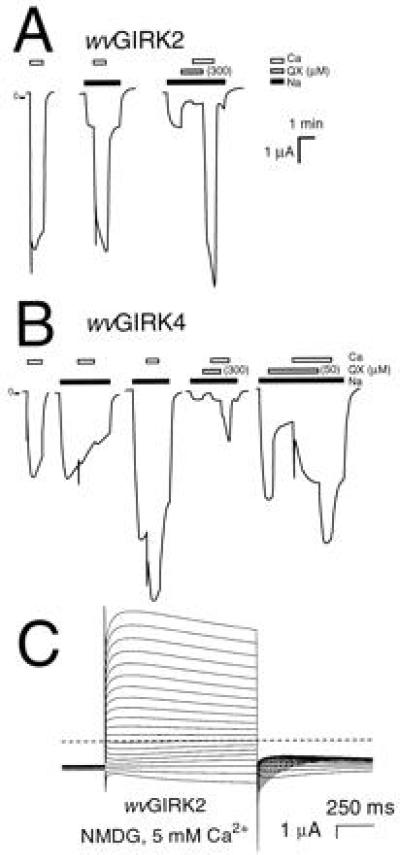Figure 2.

wvGIRK2 and wvGIRK4 channels are permeable to Ca2+. (A) Representative traces from oocytes injected with 5 ng wvGIRK2 mRNA. Bars indicate application of 98 mM Na+; 300 μM QX-314; and 5 mM Ca2+. In the third trace, 25 mM Na+ was used. Where no bar is shown, the bath solution contained 98 mM NMDG as the only monovalent cation. The large, transient (<5 s) inward currents upon application of Ca2+ are highly reproducible and are not artifacts, since they are observed only with Ca2+. Note that the Ca2+-induced currents are suppressed by QX-314. (B) Traces from oocytes injected with 25 ng wvGIRK4 mRNA. Bars indicate application of 98 mM Na+; 300 or 50 μM QX-314 as shown; and 5 mM Ca2+. In the fourth trace, 25 mM Na+ was used. (C) Representative voltage-jump records from an oocyte injected with 5 ng wvGIRK2 mRNA and exposed to 5 mM Ca2+ in 98 mM NMDG solution. The membrane potential was held at −80 mV then stepped to test potentials between −100 and +90 mV in 10 mV increments for 1 s, at intervals of 5 s. The dashed line indicates zero current. No subtractions were performed, and currents were not corrected for desensitization.
